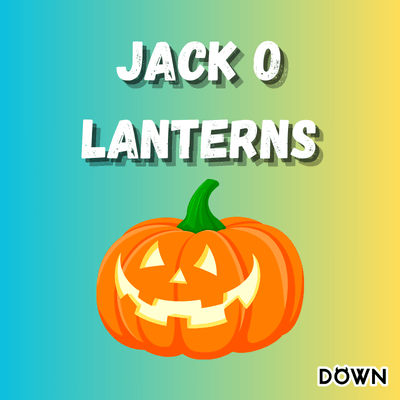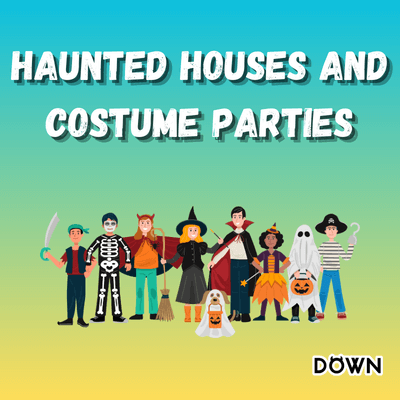
What Is Halloween About: A Historical Overview

What is Halloween about? Do you actually know?
Halloween, celebrated on the 31st of October each year, is a holiday known for its spooky and festive nature. But what is Halloween about, and how did this celebration originate? In this historical overview, we’ll delve into the origins and traditions of Halloween, shedding light on the rich tapestry of customs and beliefs that make this holiday what it is today.
The Ancient Roots of Halloween
Halloween has ancient Celtic origins, with its history dating back over 2,000 years. It can be traced to the Celtic festival of Samhain, which was celebrated at the end of the harvest season in what is now Ireland, the United Kingdom, and northern France. Samhain marked the transition from the light half of the year to the dark half and was believed to be a time when the boundary between the living and the dead was blurred.
Samhain Traditions
During Samhain, the Celts would light bonfires and wear costumes, often consisting of animal heads and skins, to ward off malevolent spirits. The belief was that the spirits of the dead and otherworldly beings would roam the Earth on this night. The Celts also practiced divination to predict the future and often left food offerings to appease these spirits.
The Influence of Roman and Christian Traditions
The Roman Empire conquered the Celtic lands, and as a result, Samhain merged with two Roman festivals: Feralia and a day to honor Pomona, the Roman goddess of fruit and trees. This fusion of traditions contributed to the development of what would later become Halloween.
Christianity also played a significant role in shaping the holiday. In the 7th century, Pope Boniface IV established All Saints’ Day, or All Hallows’ Day, on November 1st to honor Christian saints and martyrs. The evening before All Hallows’ Day became known as All Hallows’ Eve, which eventually evolved into Halloween.
Halloween in the Middle Ages
During the Middle Ages, Halloween began to take on more religious overtones. All Souls’ Day, celebrated on November 2nd, was added to the Christian calendar to honor the souls of the departed. The evening before All Souls’ Day, known as All Hallows’ Eve, continued to feature elements of Samhain, such as costumes and mischief.
The Arrival of Halloween in America
Halloween was brought to North America by Irish and Scottish immigrants in the 19th century. These immigrants helped popularize Halloween festivities in the United States, which eventually led to the holiday’s widespread adoption.
Jack-o’-Lanterns

The tradition of carving pumpkins into jack-o’-lanterns is believed to have originated from an Irish folk tale about a man named Stingy Jack. This custom became a prominent part of Halloween celebrations, with people carving frightening or humorous faces into pumpkins.
Trick-or-Treating
The practice of trick-or-treating has its roots in the medieval custom of “souling,” where people would go from house to house to ask for soul cakes in exchange for prayers for the dead. This tradition evolved into children going door-to-door for candy and treats.
The Modern Halloween
Halloween continued to evolve in the United States during the early 20th century. It transformed into a community-centered holiday with an emphasis on festivities, costumes, and fun. Today, Halloween is a major cultural event celebrated not only in North America but also in various parts of the world.
Haunted Houses and Costume Parties

Haunted houses, costume parties, and themed decorations have become integral to Halloween celebrations. People enjoy getting together to share in the spirit of the holiday and engage in spooky and imaginative activities.
Cultural Variations
While Halloween is widely celebrated in North America, other countries have put their own unique spin on the holiday. For example, in Mexico, the Day of the Dead (Día de los Muertos) honors deceased loved ones through colorful altars, parades, and other festivities.
Halloween Traditions and Symbols
Trick-or-Treating
The act of going door-to-door in costumes to collect candy and treats from neighbors remains one of the most cherished Halloween traditions.
Costumes
Dressing up in costumes allows people to embody various characters and creatures, from witches and vampires to superheroes and historical figures.
Jack-o’-Lanterns
Carving pumpkins into jack-o’-lanterns is a popular activity, with intricate designs and creative expressions lighting up the night.
Haunted Houses
Haunted houses and attractions offer thrilling experiences for those who enjoy a good scare during the Halloween season.
Ghosts and Ghouls
Ghosts, ghouls, and other supernatural beings are central to Halloween lore and often featured in decorations and stories.
Candy
Halloween wouldn’t be complete without the exchange of candy and treats, often distributed by individuals and community events.
The True Spirit of Halloween
Halloween is about more than costumes and candy. It’s a celebration that encompasses history, culture, and the human fascination with the mysterious and the supernatural. Whether you’re carving a jack-o’-lantern, telling ghost stories, or joining a costume parade, Halloween allows us to explore our creativity and connect with others in a unique way.
Halloween’s Contemporary Significance
As Halloween evolved over time, it acquired cultural significance beyond its historical roots. It has become a day when people of all ages, especially children, revel in the joy of costumes, candy, and community. The holiday encourages creativity and imagination, providing an opportunity for self-expression and storytelling.
Community Involvement: Halloween is not only about individual enjoyment but also about community engagement. Many neighborhoods come together to organize events, decorate streets, and participate in costume parades. This sense of unity fosters a strong feeling of togetherness.
Family Traditions: For families, Halloween offers an opportunity to create lasting traditions. Carving pumpkins, baking themed treats, and visiting haunted houses become cherished moments that are shared across generations.
Business and Commerce: Halloween is also big business. Retailers, costume shops, and the candy industry see significant surges in sales during this time. The demand for costumes, decorations, and sweets has led to a thriving Halloween economy.
Festive Decorations: From eerie cobwebs to elaborate haunted houses, Halloween decorations have taken on a life of their own. Many people put great effort into turning their homes into spooky spectacles for all to enjoy.
The Global Reach of Halloween
While Halloween is often associated with North America, it has spread to other parts of the world, each region adding its unique flavor to the celebration.
United Kingdom: In the United Kingdom, Halloween has gained popularity, and it’s now common to see trick-or-treaters and Halloween-themed parties.
Ireland: Halloween’s roots run deep in Ireland, and it remains a significant holiday celebrated with parades, bonfires, and costume parties.
Mexico: In Mexico, the Day of the Dead (Día de los Muertos) takes center stage, honoring deceased loved ones with altars, sugar skulls, and vibrant processions. It often aligns with the Halloween season.
China: Halloween is a growing trend in China, particularly in larger cities where costume parties, themed events, and decorations have become more common.
Japan: Halloween has also found its way into Japanese culture, with costume parades and Halloween-themed merchandise in stores.
Conclusion
In the modern world, Halloween is about connecting with our past while embracing the present. It brings communities together, nurtures creativity, and allows us to explore the mysterious and supernatural. Whether you’re a fan of haunted houses, a connoisseur of sweets, or simply enjoy the sight of creative costumes, Halloween has something for everyone. It’s a day to let your imagination run wild and to appreciate the cultural and historical tapestry that makes Halloween what it is today.



